Future Now
The IFTF Blog
Podcast: Borders and belonging
Borders, belonging, identity immigration and refugees in Ireland and Germany.
by IFTF Research Fellow Mary Kay Magistad; reposted from Whose Century Is It? on PRI
Trace your family tree back far enough, and you'll likely find an immigrant or a refugee. Even seemingly homogenous populations, like Ireland's, have had plenty of them over time, coming in and going out. Germany is now integrating almost a million refugees who have come in over the past year. In the face of such changes, how do people in each country consider, expand or defend their identities?
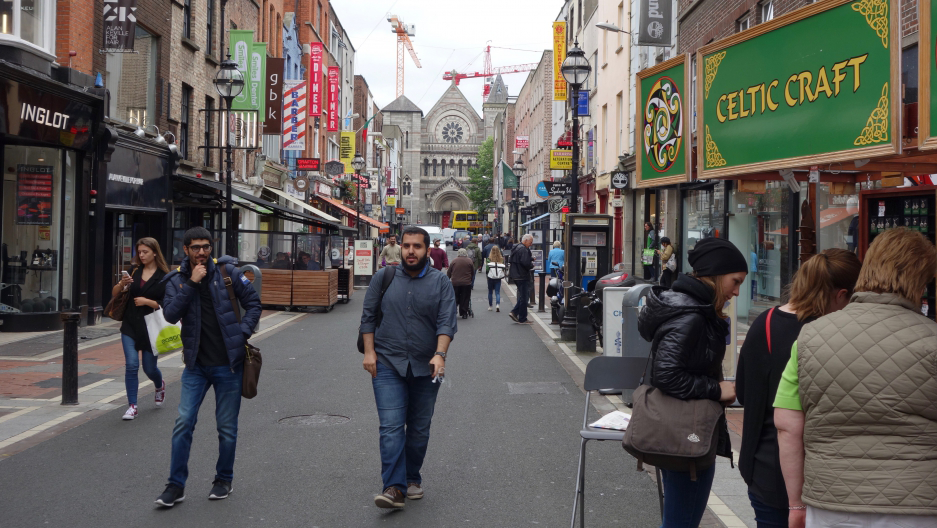 Credit: Mary Kay Magistad
Credit: Mary Kay Magistad
If you stroll the streets of Dublin, past the flower stalls and street musicians, out to the River Liffey, you come upon a three-masted sailing ship — a replica of the Jeanie Johnston. The original ship took thousands of Irish immigrants, a couple hundred at a time, to America.
You can tour the ship now, and get a sense of what it was like in the mid-19th century, when 200 people would be crowded into this small space, fleeing famine in Ireland to seek a new life in the new world. No one died on this ship — which was unusual in these crossings. There was a ship doctor and good hygiene — also unusual.
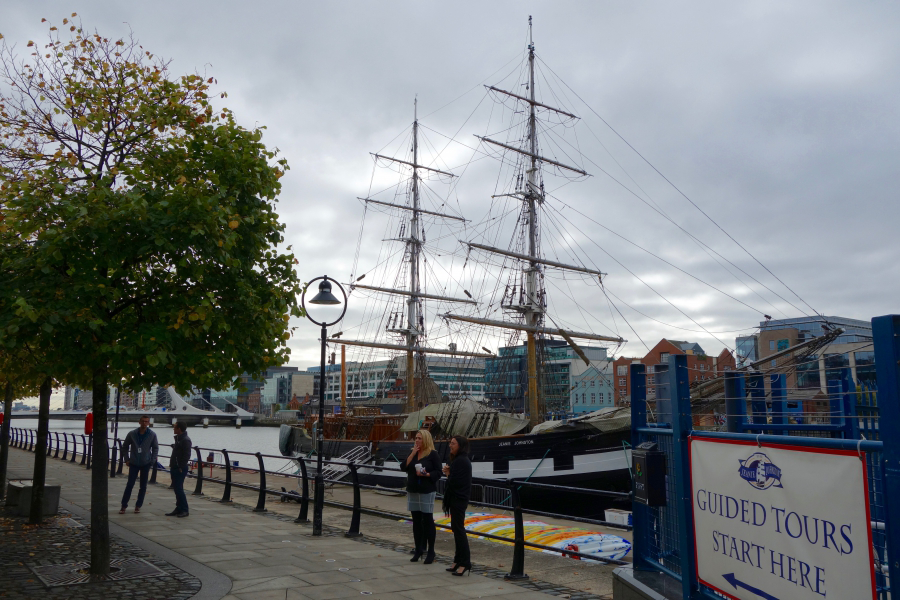 Credit: Mary Kay Magistad
Credit: Mary Kay Magistad
I toured the cramped space, and thought about my Irish ancestors who traveled on a ship like this — maybe not as nice as this — at the tail end of the Irish potato famine. One of those farmers spent years working off his passage after he landed in New York. And New Yorkers at that time — in fact, many Americans — had little but contempt for the Irish. They were seen as unkempt and uncouth, an unwelcome addition. Those were the days when you would see signs that said “No Irish Need Apply.”
I think about them when I think about refugees and immigrants now. I also think about the German side of my family, the relatives who came in the late 19th century because they didn’t want their sons fighting for German expansion. So, starving economic migrants on one side, political refugees on the other, all made a home in the United States. I’m here as a result.
I think about all of this as I think about the latest wave of refugees and immigrants, amidst all the talk of building walls and excluding whole categories of people. I wonder how their kids, grandkids and generations after that, will integrate, contribute and shape this century, here in the United States, and in other countries, including the countries from which my ancestors left, generations ago. As it turns out, both those countries have pretty complicated histories on borders and belonging: On what it means to put up walls and barriers — between east and west in Germany, north and south in Ireland — and on how they feel about being open now, both within, and to those coming from outside.
Turns out, the Old World has something important, in this political season, to say to the New about immigration and identity, borders and belonging.
*****
An old stone castle stands on the banks of the Newry River. It’s called Narrow Water, because — the river here is narrow. This is a storied river. St. Patrick is said to have camped on a sandy stretch of it.
Its other name, Clanrye, plays off an Irish version of the name that means “The King’s Valley.” The water in this particular stretch also divides northern and southern Ireland. The 16th century castle is on the northern side, in Newry, in County Down. During Ireland’s Troubles in the 1970s and after, Newry was a particularly troubled place. The IRA, the pro-independence Irish Republican Army, was active here. An infamous double-ambush took place here on Aug. 27, 1979, killing 18 British soldiers.
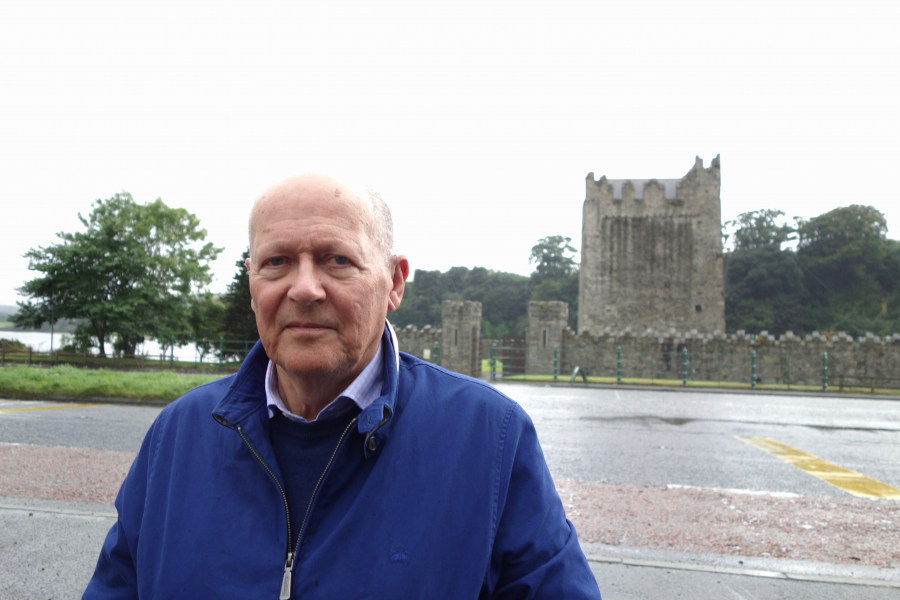 Credit: Mary Kay Magistad
Credit: Mary Kay Magistad
More recently, Narrow Water was in the news for more positive reasons. When the entire island of Ireland was in the European Union - the Republic of Ireland by itself, and Northern Ireland as part of the UK - border controls between the two sides relaxed. You can now drive across without even havint to pause. The Eu offered to pay part of the cost of a bridge across the Narrow Water, which would have cut travel time for locals considerably. But a Northern Irish politician blocked funding from his side, and the project never went ahead.
"I'm personally disappointed, because I'd love to see Ireland more united, in every way," says Conor O'Clery, an Irish jorunalist and author.
He grew up in Northern Ireland, lived for a couple of decades outside Ireland as a foreign correspondent, and now lives in Dublin. He says he considers himself "100 percent Irish, though if you check my DNA, you'll probably find there's Spanish, or some other blood there."
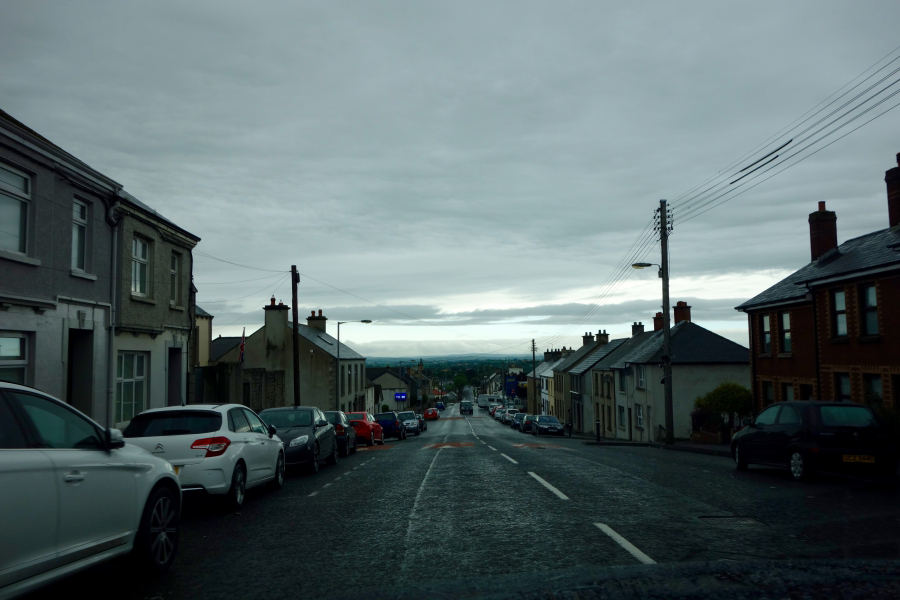 Credit: Mary Kay Magisad
Credit: Mary Kay Magisad
But in a small Northern Irish town near the border, a Protestant minister’s wife just finishing up a women’s group meeting in her church on a rainy Sunday afternoon, says her sense of her own identity is quite different.
“I feel very British. I am British, British born and bred. I am very much British, was from birth, and I still feel very British,” she says, though she admits her ancestors came from Ireland, not England. Barbara says she voted for Brexit — in contrast to 56 percent of Northern Irish voters who voted to stay.
“But I must confess, I didn’t think the vote would go that way. When it did, I panicked a little,” she adds.
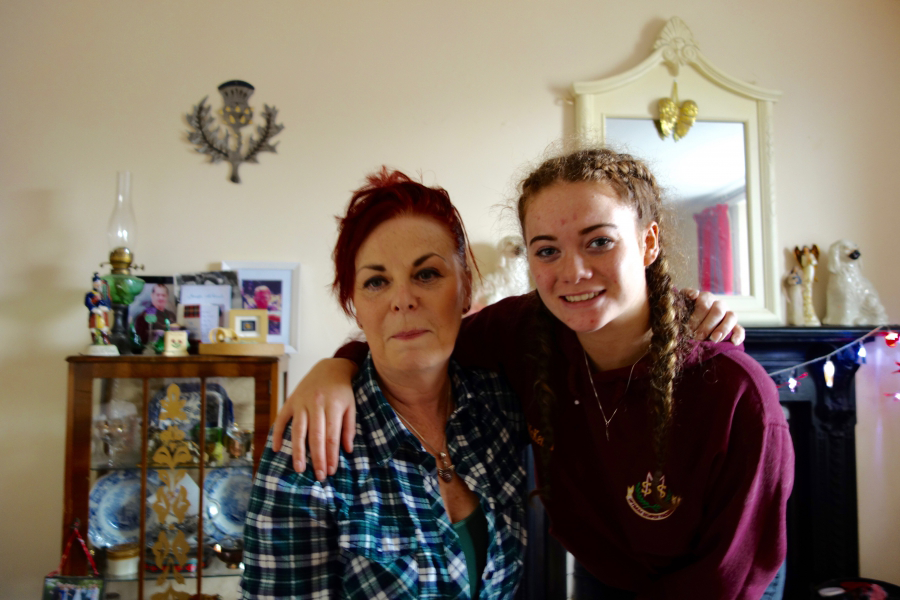 Credit: Mary Kay Magistad
Credit: Mary Kay Magistad
In the same town, Ann McCredie, born in England and raised in Glasgow by a Scottish father and Northern Irish mother, says she feels Scottish, not British, though she’s fond of Ireland. She’s disappointed by the Brexit vote, wants independence for Scotland and has positive feelings about immigrants.
“I think the country, the union will come to a standstill without people from the EU here working here,” she says. “And emigrants from Scotland and Ireland and England go abroad and live you know. People seem to forget about them.”
Actually, it’s hard to forget about Irish immigrants going abroad, when there are about 70 million people around the world of Irish descent, compared to about 4.5 million people in the Republic of Ireland, and 6.5 million on the entire island of Ireland, north and south. While Ireland’s internal border long limited movement, its external border has seen a lot of coming and going.
“The Irish, maybe more than any other European nation, have had more direct, first-hand experience as migrants, as economic refugees, as political refugees, going right back to the 16th century,” says Jane Ohlmeyer, a professor of modern history at Trinity College in Dublin.
That may have contributed to Ireland’s general acceptance of immigrants. A recent EU-wide survey found that Ireland’s younger generation feels more positively about immigrants than any similar population in Europe.
“I think we also recognize that in a small country, migration can be a real positive,” Ohlmeyer says. “It really enriches Ireland. It was Polish migrants, or Eastern European migrants who came and really helped build Ireland. The American presence has been very significant, with the big multinationals. Even today, our immigration policy is much more like Canada’s than the United Kingdom’s, at all levels.”
Ohlmeyer, who was once Trinity College’s vice president of global relations, says when she’d travel internationally, promoting the idea of studying in Ireland, people would ask about the level of racism in Ireland.
“And I’m very happy that we don’t have these Trump-like figures who are stirring up racial and ethnic hatred,” she says. “Now, obviously, we’ve had our problems in terms of Catholics and Protestants, but it’s much more localized, if you know what I mean. But it’s a thing of the past. And I also think it’s because nobody feels threatened, as well. And they see migration in a much more positive way than the UK sees it.”
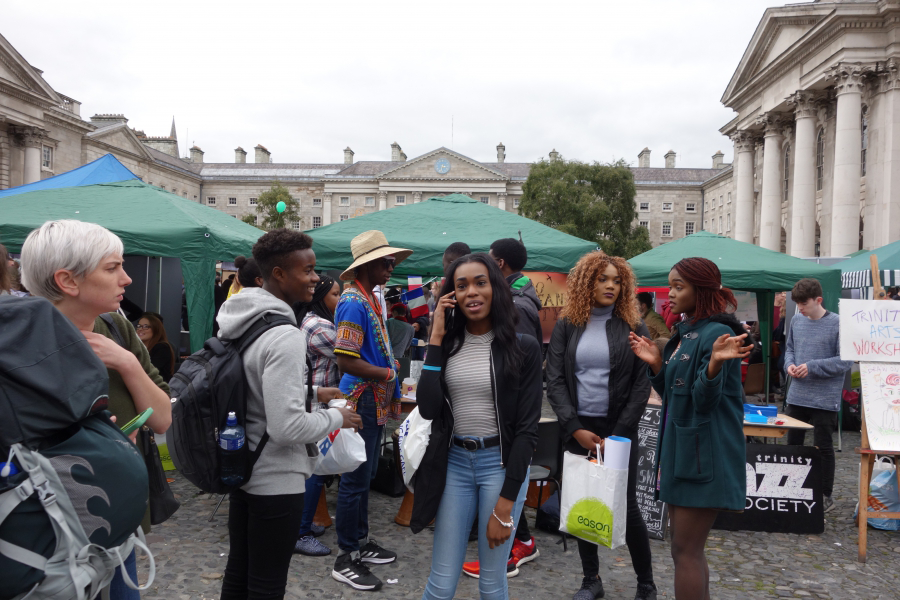 Credit: Mary Kay Magistad
Credit: Mary Kay Magistad
It certainly felt that way to me, as I strolled around an activities fair and chatted with students at Trinity College, at the beginning of the school year. One particularly lively booth was the Afro-Caribbean Club.
I was chatting with Kenny Olaniyi, a 20-year-old law and business major. He was born in Nigeria; his family came to Ireland when he was 4.
“I would say Ireland is probably all I know. It’s what I’m used to,” he says. “And I love this place. I’ve always said I don’t really want to move. I want to see the world, but I want to come back to set up. Because I think it’s the best place to grow. We’re not really disconnected from the world. We’re still part of the EU, and all that offers. And Ireland’s just a good place, for me. It’s a place I’ve enjoyed, and it’s always felt like home to me. I can’t see anyplace else being home for me. I’ve loved traveling and stuff, but Ireland’s home. I do feel accepted, and this place is where I’m meant to be, really.
Think about that a minute. A Nigerian refugee kid grows up in Ireland, feels accepted, invests in his education, and is happily planning to live his life here, and give back to a place that’s been good to him. It’s a story that could also be told many times over in the Untied States.
While the Irish seem pretty tolerant of outsiders coming in, Ireland has taken in few Syrian refugees. The government has pledged to take 4,000, but the number of those who have actually come so far is a small fraction of that.
*****
Meanwhile, my ancestors’ other country is the primary goal of many refugees. Germany has taken in 800,000 refugees in little more than a year. Germany, the land that once made Aryan purity a rallying cry, opened its borders and let desperate people in. It was a humanitarian gesture, but there was also something in it for Germany — an infusion of young people into an aging German workforce, a potential long-term boost to the economy.
Of course, that didn’t come without a political cost to Angela Merkel, who has since tightened up border controls. A right-wing, anti-immigrant party called Alternative for Germany won more votes than expected in local elections over the past year. In one local election, in Saxony-Anholt, they received almost 25 percent of the vote. In Berlin, they received just over 14 percent, with far more support in what used to be East Berlin. The city still bears the scars of its former division.
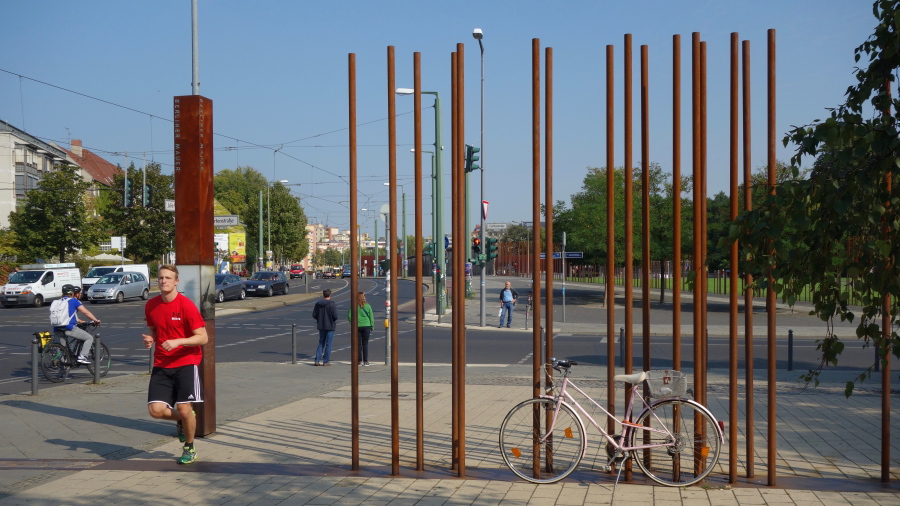 Credit: Mary Kay Magistad
Credit: Mary Kay Magistad
At one site of the Berlin Wall Memorial, on a Berlin street called Bernardstrasse, near a sculpture of poles that form a wall you can see and walk through, are recordings of voices from a time when trying to get past the Wall could get you killed.
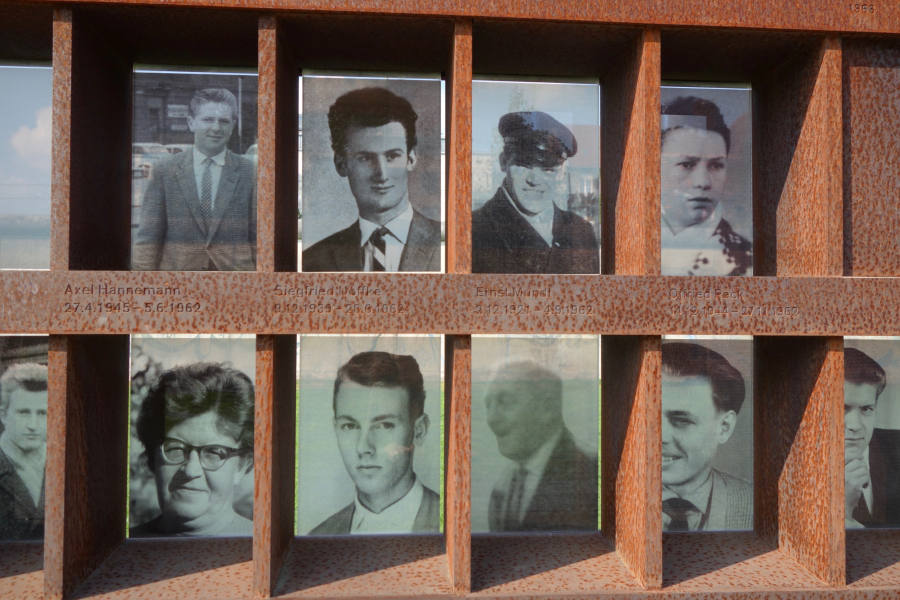 Credit: Mary Kay Magistad
Credit: Mary Kay Magistad
Of course, that wall was meant to keep people in. In one neighborhood of eastern Berlin, Syrian refugees have arrived, and they’re grateful for it.
“Germany is good,” says Fadi, a 28-year-old former car dealer from the Syrian city of Hama, now studying German eight hours a day and pining for his family; he doesn’t yet have the papers to work, and he can’t afford to pay for them to travel here and join him.
Ahmed, also 28, a tailor from Aleppo, is in better shape. His family is with him, and he’s already received permanent asylum and the right to work in Germany.
 Credit: Mary Kay Magistad
Credit: Mary Kay Magistad
“I have a whole future here, with work and children, everything,” he says.
When asked how the neighbors treat them, the two men at first say everything’s fine. But when a friend joins them, they talk about an incident. Drunk German and Serbian men with knives were hanging out near the gate to the refugee apartment compound near midnight, threatening Syrian refugee men as they came in. Another time, carloads of people came to the gate late at night and blared music, until someone called the police. Of course, compared to Aleppo, this is nothing. But it’s also not comfortable.
Across the street from the apartment complex with the refugees is a community with cottages and gardens, where families come on weekends, and some live full time. Karen, a middle-aged former nursery school teacher, pauses from trimming her hedge to talk about her new neighbors.
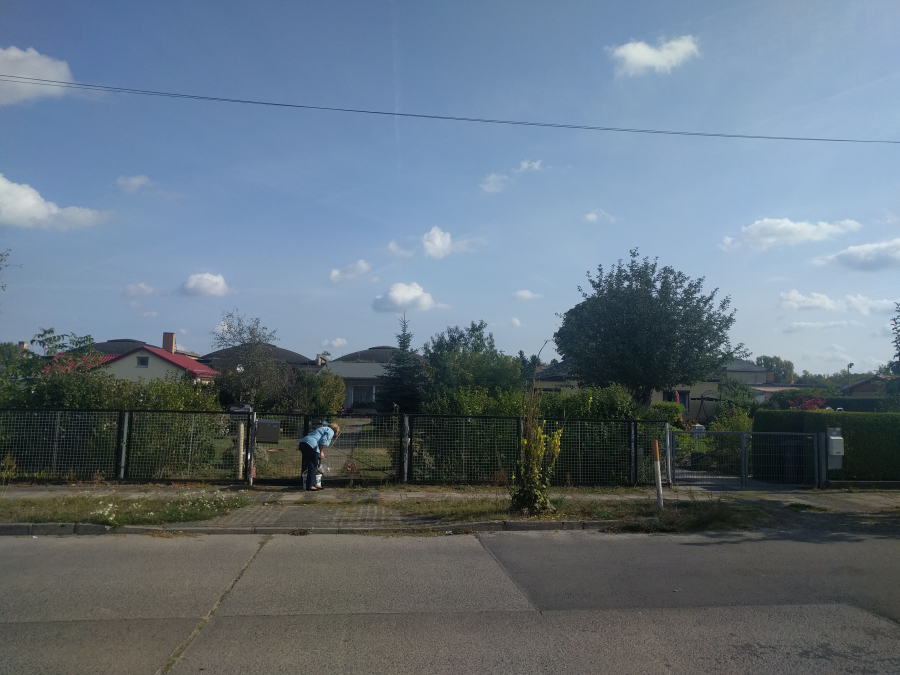 Credit: Mary Kay Magistad
Credit: Mary Kay Magistad
“It’s a very mixed picture,” she says. “There are some very nice people there, and other people who are not so nice. There have been problems. In the evening, they start being lively, and they play very loud music, and if someone here asks them to be quiet, they will shout back, ‘shut up.’ So that is something that people don’t like very much.”
They also didn’t like that the government first told them there would be no refugees housed in this neighborhood, and then they heard a report on TV that they were coming.
“The bad thing is, on Monday we saw it on television. On Wednesday, there was the meeting in the church. And on Friday, they were coming,” Karen says. “And this wasn’t only something that happened here, but also in other areas, where the local population was not informed well. Just, suddenly, people came, and that’s why people were so angry.”
Some of the neighbors said at the community meeting that they worried crime would go up, robbery especially. That hasn’t happened. And as people have grown used to having a community of refugees among them, some of the neighbors have even come to the refugee center, and offered fruit from their trees.
“Refugees are people like you and me,” Karen says. “There are good ones, and bad ones, and one has to help. And if you’re a refugee, or wherever you come from, if you hurt yourself, you have pain. That is what ties us together, and it is the same for everybody.”
But not everyone in Berlin, or in Germany, feels as Karen does; a political sign near her house says “Germany for the Germans.
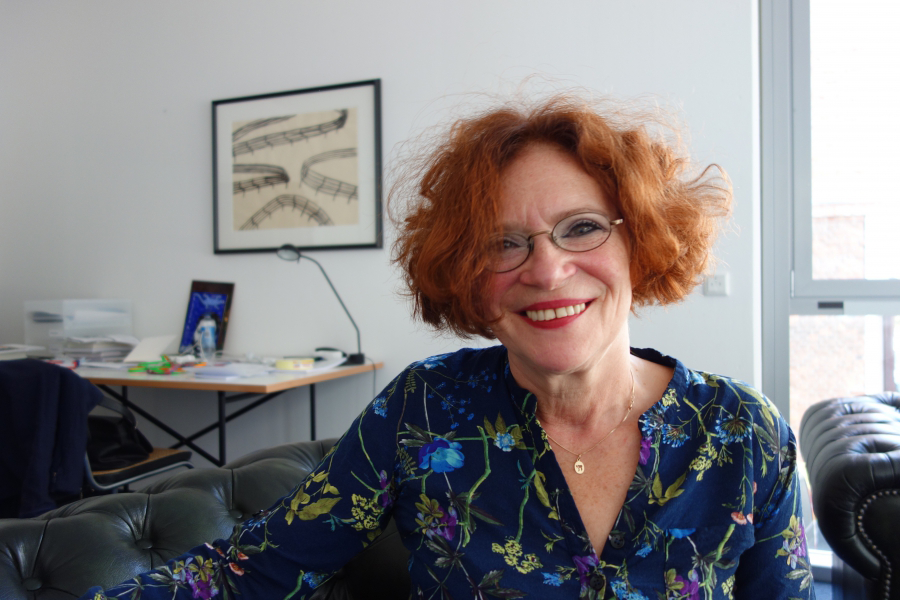 Credit: Mary Kay Magistad
Credit: Mary Kay Magistad
Sentiments like that worry Anetta Kahane. A former Stasi agent, she is now critical of the East German government for which she once worked, and especially about its failure to face embedded problems of racism and anti-Semitism in East German society. She’s now the chairperson of the Amadeu Antonio Foundation, which tries to work for tolerance, and against anti-Semitism, racism and right-wing extremism.
For Kahane, this is personal. Her parents were both in concentrations camps in France — her father, both a Communist and a Jew, escaped and fought in the resistance, as a captain. Anetta was born in East Germany where, she says, even as West Germany embarked on decades of self-reflection and atonement about its Nazi past, East Germany embraced a kind of amnesia about the Holocaust.
“The GDR [German Democratic Republic, or East Germany] was just saying, we don't have to do with that. We are not responsible for the war. We are completely different. We are a working class society. And that's why we don't care for the Jews. We just don't, you know. We just don't talk about it. It was a real taboo. And if you don't know the word Jew any more, there's no Holocaust, there's no Jew. Sometimes, of course, and that happened to me as well, this will pop up, like kids in a school telling Jew jokes about ashes and things.”
Kahane thinks the way East Germany dealt with its anti-Semitic past is directly related to the disproportionately strong anti-immigrant impulses many people in this part of a united Germany feel.
“I think this is a very special time in Germany now, because the entire society — the entire society is becoming very nervous. It's becoming very tense,” she says. “The atmosphere after sleeping for 30 or 40 years you know this little interruption with the Wall came down. But this was a very happy interruption.
“And now that the AfD exists, they can say what they really think. It’s about the immigrants. It's about these people who are looking different. It's about racism.
But it’s also more than that. Kahane says she’s also heard people from former East Berlin and East Germany tell her they don’t want it to become like West Germany “with all these immigrants, with all this multicultural movements, and gays, and all this confusion, all these individual rights, and different identities. They want to see themselves as 'the Germans,' and they don't want to be disturbed by anybody who is different.”
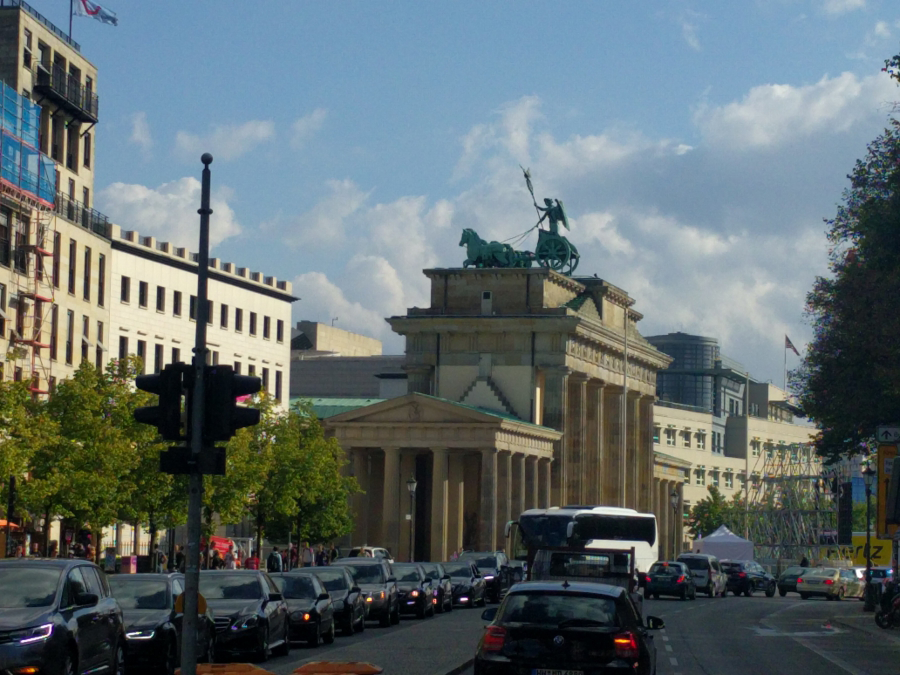 Credit: Mary Kay Magistad
Credit: Mary Kay Magistad
At an outdoor café near Checkpoint Charlie, Bernd Pickert, a journalist and editor at Die Tageszeitung newspaper, says he’s baffled by such attitudes.
“I've never understood this concept of nation because what is it, of nationality as a part of identifying yourself or being proud of,” he says. “I mean, over the last year maybe, just when Merkel said ‘OK, come,’ that was maybe one moment I was really a little bit proud of my country."
Bernd has been a volunteer working with refugees over the past year. He opened a shop, open a couple of times a week, to take in old donated bikes, repair and fix them up and make them available to refugees, so they have more mobility and autonomy. Some Syrian refugees work with him, and he’s enjoyed getting to know them as they learn German.
There are plenty of people like Bernd, who have been tolerant of and helpful to Germany’s new refugee population. He wishes there were even more, helping them settle in and feel at home. But it doesn’t surprise him that the anti-immigrant Alternative for Germany Party has gained ground since Merkel opened the door to refugees last year.
“I see it more or less as a normalization of Germany in the European context," he says. “For years, Germany was almost the only country where no rightwing populist party had some significance. If you get to Britain with UKIP [the pro-Brexit, anti-immigrant UK Independence Party], and if you go to France, if you go to Switzerland, Austria, even the Nordic countries in Scandinavia, not to mention the Eastern European countries and every country there was more or less strong right-wing party. Not in Germany. In Germany, it was all smooth. Everything was OK. Nobody feared nothing. And now things are changing, not only because of the refugee crisis but also because of the social situation within our own country. And so it's quite normal. And as long as it stays in this between 12 and 20 percent what they usually over the last nine elections have got — I'm OK with that.”
And here, I’m wondering — is that what we’ve got going on in the United States, too? There’ll always be a core population of people who resist change, resent those who aren’t like them, revere those who offer easy answers, and play on their worst fears and impulses? Perhaps. Bernd thinks we could all do better in dealing with that cohort.
“One of the key elements of political thinking of AfD [the anti-immigrant Alternative for Germany party] voters is that the mainstream press is lying,” he says. “And that it's a system-controlled press. And that nobody cares for their concerns of what common citizens think or what they suffer. And so there is a danger in everybody else closing ranks against AfD and saying all of them are nasty, all of them are assholes. Just marginalizing them as voters won’t help.
“And that's the same a little bit with Trump voters in the United States,” he says. “I read a book or thesis that the so-called white trash people are almost the only population group which can be discriminated against without fearing to be accused of political incorrectness. And that is sort of true. And so we should be careful in doing this. So yes, I want to take seriously the concerns of those people. But convert it to fact-based concern.”
There are few issues that hit more of an emotional chord, or more of an emotional nerve, than issues around borders and belonging. Where should the borders be? Who should be inside them? Who should be outside? Who gets to decide, and based on what? And what happens if those on either side of a given border, or wall, or boundary, or even those on the same side, don’t agree? We’ve seen some of the answers to that play out over time in Ireland and Germany. Each has wrestled with its demons. Each has been open, at different times, over time, to waves of immigrants and refugees – with wildly varying degrees of tolerance once they settle in.
It’s a pretty safe bet that borders won’t go away in this century, nor will attempts to cross them in search of a better, safer life. Whether to see those who cross borders as a threat or an opportunity is in the eyes of the beholder, but history suggests that, over time, tolerance beats tribalism in a fast-changing world.
Mary Kay Magistad, IFTF Research Fellow and recovering foreign correspondent, is creator and host of the “Whose Century Is It?” podcast, a coproduction with PRI/BBC’s The World, exploring ideas, trends & twists shaping the 21st century. It’s available on iTunes, most podcast apps, and at pri.org/century.



